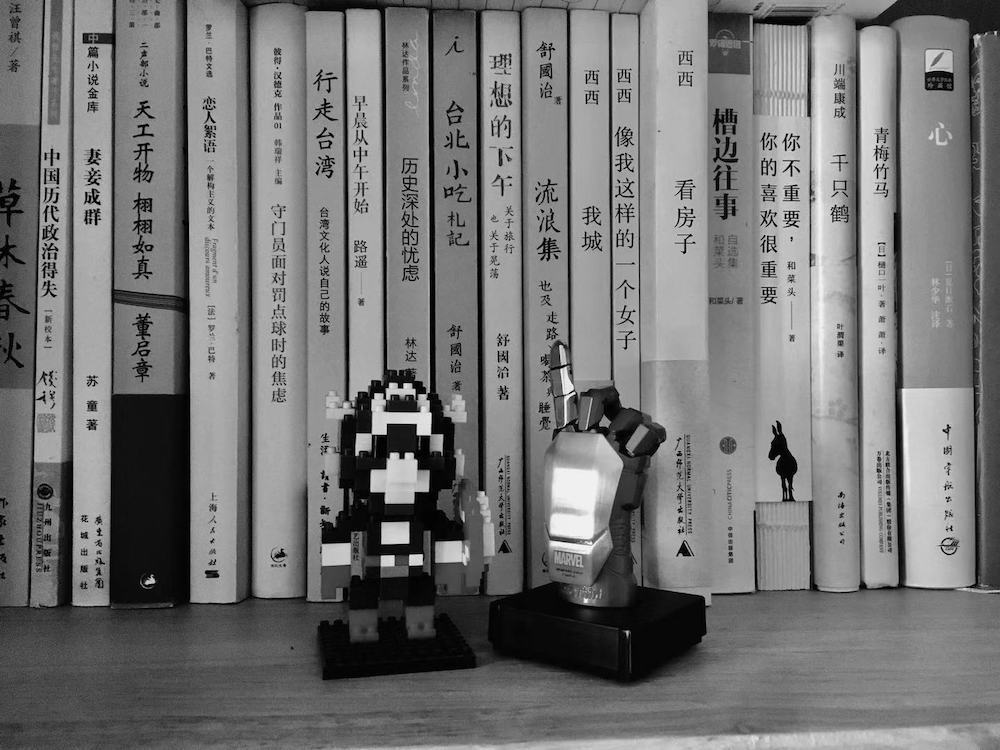We know curation from settings like museums and galleries. Curators are the managers who present the exhibitions. What they are good at is displaying a range of relevant content within a certain context. So it’s not hard to imagine what book curators do: they present books in a way that helps readers find them.
One of the most familiar jobs book curators do is helping rich people or celebrities show their collections of books in their living rooms or personal libraries. Want to know what’s on Gwyneth Paltrow’s bookshelf? Here is an interview with her book curator. However, book curation can also happen in public places like bookstores, coffee shops, furniture stores, schools, hospitals, and so on. Why? Because in those places, people can either buy books or read books.
Bookstores—large and small, chain and independent—need to sell as many books as they can. Good curation can help a lot. Large bookstores accommodate books of every kind, but there are still ways for them to help readers find books. For example, they usually separate the books into fiction and nonfiction with subcategories. Powell’s has used color-coded rooms for more general categories, and they have supplemented this system with special areas and shelf talkers to highlight “staff picks” and help readers navigate the shelves. There are also some strategies that can help smaller bookshops. For example, put the most popular books (according to the sales in the store) at the very back of the store in order to lead the customers on a journey of discovery before they reach their destination. Arrange the books that are most likely to be opened along the window so that passers-by can see that people are always reading. In either case, the curation should be based on close observation of readers’ shopping habits and preferences.
The most interesting book curation happens in stores that do not primarily sell books or that only sell books with specific themes. What they have in common is smaller book collections compared to larger bookstores. For me, what these stores do is accommodate ideas. Instead of shelving books by genre, staff can arrange books according to one core theme. For instance, if there is a book section about architecture in a particular area, books on environmental science, geography, and lifestyle can go together. Take another example from a store selling more than books: The MUJI stores I have been to in Shanghai and Fukuoka have big book sections for people who shop there. The stores provide people with a comfortable and slow-paced environment where life itself matters a great deal. I learned from the book Tokyo’s Constant Booksellers that when book curators were hired to choose and display books in the stores, their top priority was to find simply styled books that could help people slow down and enjoy living. For example, you can find a book with just pictures of people reading in different scenes and positions. And the way books are displayed there invites you to open and explore every book. They are categorized not by genre but by topic and aesthetic effect.
Places like coffee shops and lobbies in school buildings and hospitals can also facilitate reading by displaying books that might interest and inspire readers. Hospitals are a good place for people to read: it is a way for them to take their minds off the worry or physical discomfort they might be experiencing. So how do book curators know about people’s tastes? By talking to customers, students, and patients. Start the conversation by discussing hobbies instead of books—people’s hobbies can potentially tell you what they want to read.
Reading can happen wherever there are books or wherever people need books. For booksellers, reading can lead to sales, so find your own niche approach to displaying books.

